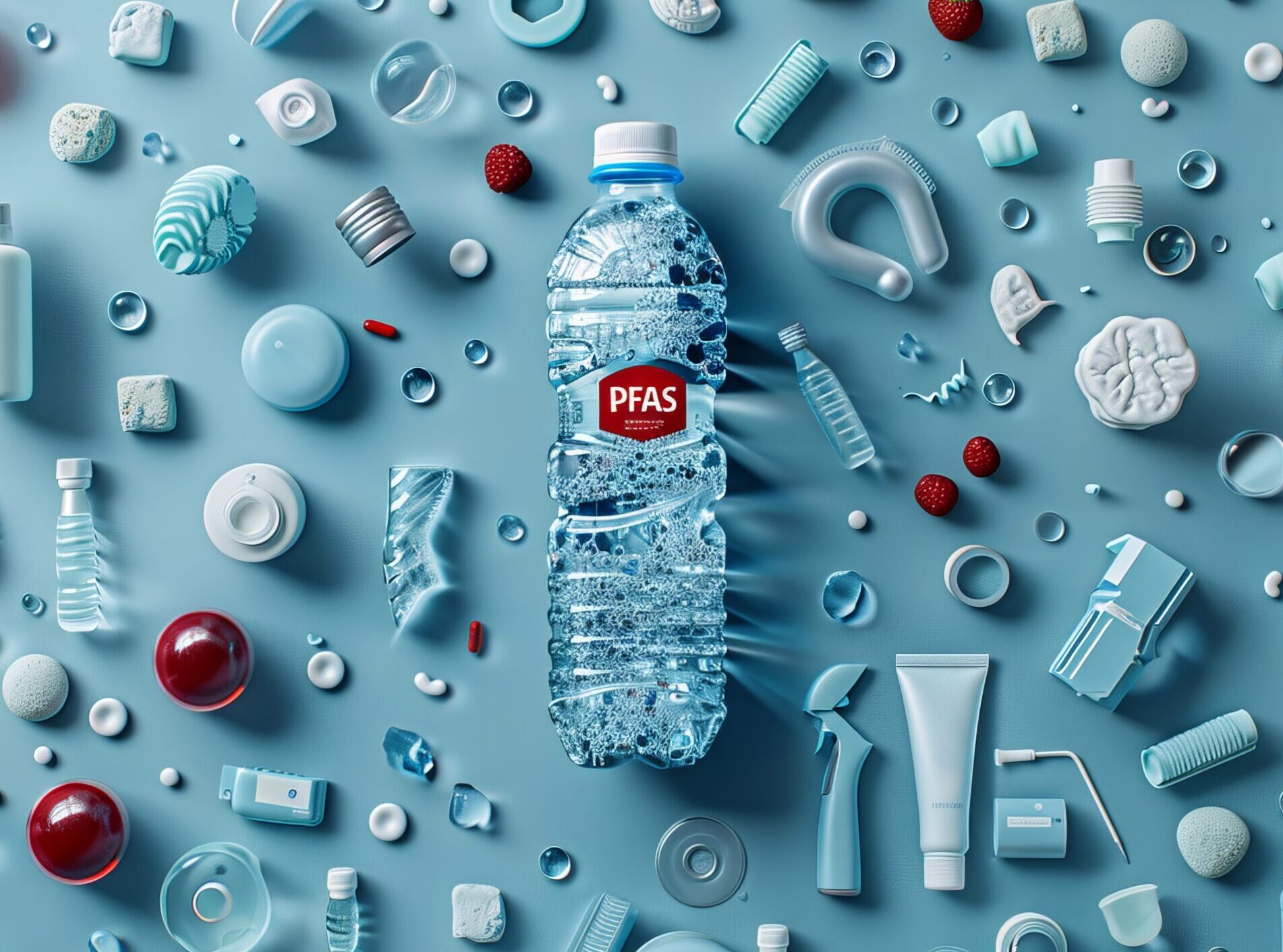If you’ve used a sticky note, flossed, worn soft contact lenses, or microwaved a bag of popcorn this week, you’ve used PFAS.
PFAS, or Per- and polyfluoroalkyl substances, are actually impossible to avoid. They’re part of a class of more than 12,000 manufactured chemicals used in thousands of everyday products. Since the 1940s, these forever chemicals have been a game-changer. They made cleanup easier, kept us dry in the rain, and repelled stains on our furniture.
But what seems too good to be true often is. Today we know that PFAS is an invisible menace lurking in plain sight.
For years, scientists have sounded the alarm on the potential health risks of PFAS exposure. These risks range from hormonal disruption and compromised fertility to high blood pressure and increased risk of cancer. This spring, legislators took action by issuing the first-ever national standards for drinking water. These standards will limit PFAS contamination to four parts per trillion.
“We can’t see, touch or taste these chemicals, but we know now they’re in us and all around us,” said Alaina Harkness, CEO of Current and Great Lakes ReNEW, one of just ten inaugural National Science Foundation Regional Innovation Engines. The mission of Great Lakes ReNEW is to turn waste into wealth—and that includes nurturing innovation on destroying forever chemicals. “Innovation like what we’re focused on in ReNEW is showing promise that we can destroy PFAS, a key step in making ourselves and our environment healthier,” Harkness added.

The timing is ideal. “The new drinking water regulations are raising awareness of PFAS contamination,” noted Dr. Linda Lee, a distinguished professor at Purdue University with a joint appointment in the College of Agriculture and College of Engineering who has worked on PFAS for more than two decades. “It’s pushing research and industry to accelerate innovation.”
Why PFAS are so hard to destroy
The tide may be turning against PFAS, but it’s not easy to get rid of forever chemicals.
Strong carbon-fluorine bonds, some of the strongest in organic chemistry, make up PFAS. These bonds don’t break down under natural processes like sunlight, heat or via microbes. This means PFAS do not degrade easily in the environment. They persist in soil, air, or water as a long-term pollutant for decades, even centuries.
PFAS can be removed from water, but without breaking the carbon-fluorine bonds to destroy the molecules, they eventually return to the environment. Additionally, there is bioaccumulation, where chemicals gradually build up in organisms over time through repeated exposure. These factors highlight the urgent need to find solutions to the PFAS problem.
So, can we destroy PFAS? The answer is yes, but it’s complicated and can be costly.
How PFAS are being destroyed
Scientists, researchers, and commercial firms are working on a variety of ways to destroy PFAS. Many begin with pre-destruction steps to concentrate the chemicals, including granular activated carbon filtration, reverse osmosis, ion exchange, and foam fractionation.
Further PFAS destruction methods aim to break down PFAS into less harmful chemicals, including carbon dioxide, fluoride ions, and water. However, not all approaches are capable of complete destruction. Some methods are more effective at short- or long-chain PFAS destruction (short-chain PFAS have fewer carbon atoms in their molecular structure, while long-chain PFAS often have more than eight).
Dr. Brian Chaplin is an associate professor of chemical engineering at the University of Illinois and member of the ReNEW coalition. Chaplin is focused on electrochemical and catalytic processes for water treatment, emphasizing the development of technologies that promote water sustainability.
Recent research has tested both a reactive electrochemical membrane and a catalytic reactor for the destruction of PFAS from wastewater. “Simply put, we use electrochemistry to destroy contaminants, like PFAS. We make different types of electrodes, submerge them in water, and use electricity to drive reactions.”
Dr. Chaplin notes that the strength of the bond makes destroying PFAS challenging. “With a lot of contaminants, we break one bond and we’re done. With PFAS, the products that form can also be toxic, so you have to have fairly long reaction times to produce what we call the mineral products—carbon dioxide, water, and fluoride, which are non-toxic under these conditions. But if we don’t get to that point, there’s still residual toxicity, and this is a big problem, especially due to the prevalence of these compounds.”

He pointed out other challenges. “We have to put so much energy into the water to destroy PFAS that virtually anything else in there can undergo reactions.” He explained that with electrochemical destruction, as with other methods, most of the energy goes into side reactions. With improved selectivity—which would channel energy into only destroying PFAS—electrochemical destruction could be more cost-effective.
Other technologies and methods for PFAS destruction are in development or early commercialization. Not all are being developed by researchers and partners within the ReNEW coalition. Briefly, these include incineration, supercritical water oxidation, hydrothermal alkaline treatment, bioremediation and more. Multiple methods are being tested, refined and commercialized to address PFAS destruction for short- and long-chain chemicals and in various environments and applications.
The challenge is also successfully moving from lab to pilot scale to full-on commercialization. Of his work, Dr. Chaplin said, “Our hope is that ReNEW will be an engine helping to accelerate testing for our reactor prototype, with the ultimate goal of piloting and scaling it up.”
“ReNEW is built on the idea that through collaboration, we can do more,” Harkness added. “When our partners have breakthroughs in destroying toxic chemicals like PFAS, we all win.”
Interested in getting involved with Great Lakes ReNEW? Contact Us.
This material is based upon work supported by the National Science Foundation under Cooperative Agreement No. 2315268.





